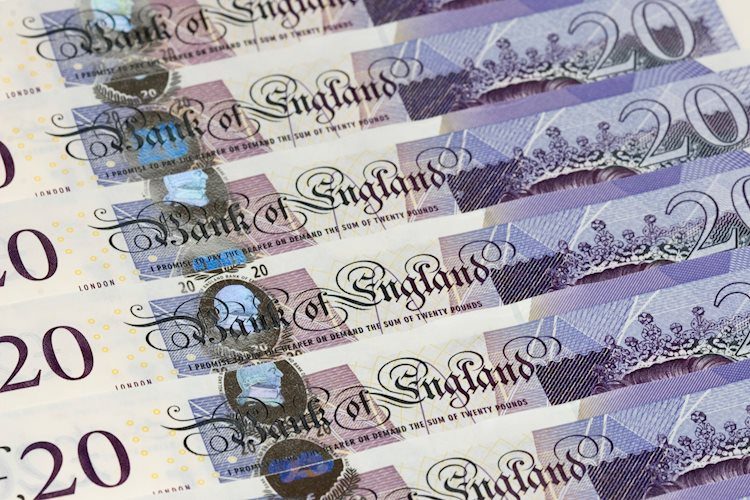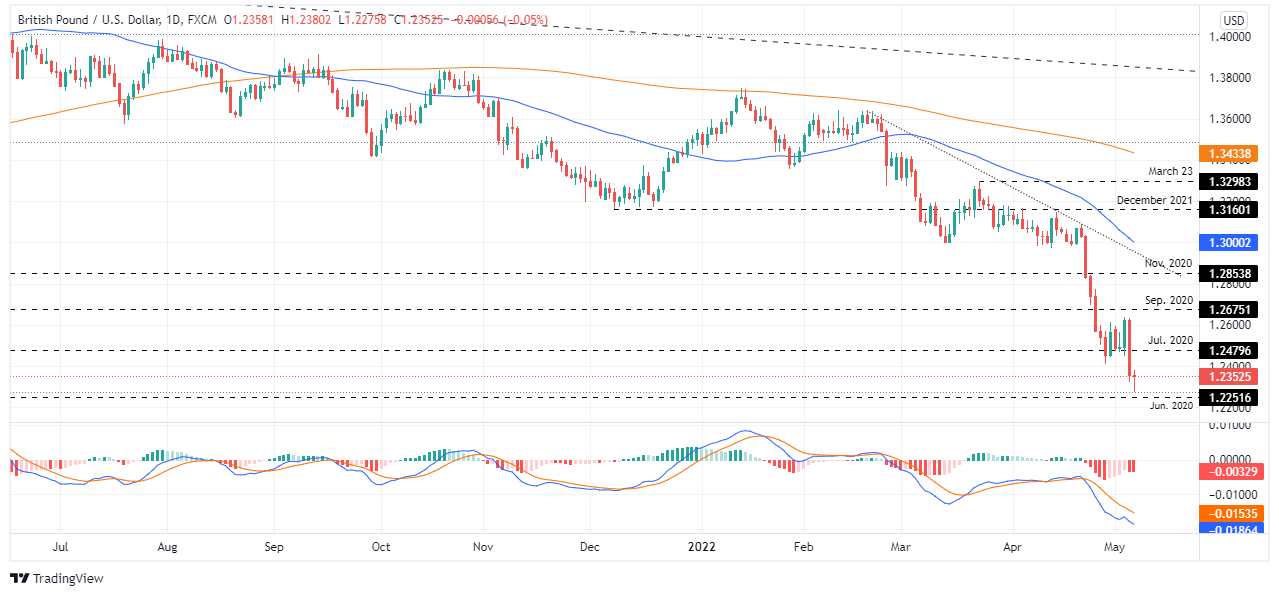- The GBP/USD will finish the week with hefty losses of 1.74%.
- Positive US employment figures and BoE’s speaking keeps the GBP downward pressured.
- GBP/USD Price Forecast: To remain downward biased unless GBP bulls reclaim 1.2600.
The British pound appears to regain composture but remains losing in the day, down 0.06%, after the Bank of England hiked rates by 25-bps on Thursday. At the time of writing, the GBP/USD is trading at 1.2352.
US employment figures came positive, and the BoE expects inflation to reach 10%
Global equities remain down during the North American session, while the US 10-year Treasury yield rose to a YTD high of around 3.131%. Albeit higher US yields, the greenback is giving back some earlier weekly gains, as portrayed by the US Dollar Index, a gauge of the buck’s value against a basket of six currencies, down 0.18%, sitting at 103.370.
The US Department of Labour reported April’s Nonfarm Payrolls figures, showing that the economy added 428K new jobs, higher than the 391K, though the Unemployment Rate remained unchanged. Also, the Average Hourly Earnings rose by 5.5%, slightly lower than expected, and would not deter the Federal Reserve from continuing its tightening cycle.
Analysts at ING perceived the report as mixed. They added in a written note that “the unemployment rate held steady at 3.6% rather than dropping to 3.5% as expected, which in combination with a softer average hourly earnings figure of 0.3% month-on-month rather than the 0.4% consensus forecast (and slower than the 0.5% gain in March) may been taken as a signal of less inflationary pressures in the jobs market.”
Elsewhere, the Bank of England (BoE) Chief Economist Huw Pill crossed the wires in the mid-European session. He said that inflation in the UK is becoming more persistent, added that inflation is going up to 10%, and expects growth to stagnate in Q2.
Next week, the UK economic docket will reveal the Gross Domestic Product (GDP) for March, alongside the Balance of Trade and Manufacturing Production. Across the pond, a raft of Fed speaking throughout the week would dominate the headlines, alongside the Consumer Price Index (CPI) and Producer Price Index (PPI) for April.
GBP/USD Price Forecast: Technical outlook
The GBP/USD is still downward biased, though it faced solid support at June’s 2020 lows around 1.2251. Also, the MACD, as the histogram shows, is “forming” a positive divergence, which is usually a signal that the trend is about to shift. However, unless the MACD-line crosses above the signal line, GBP/USD traders should refrain from opening fresh long bets in the pair.
To the upside, the first resistance would be the figure at 1.2400. Break above would expose crucial resistance areas like July 2020 swing low-turned-resistance at 1.2479, followed by 1.2500. On the other hand, the GBP/USD first support would be 1.2300. A breach of the latter would expose the YTD low at 1.2275, closely followed by June’s 2020 swing low at 1.2251.

